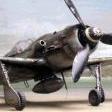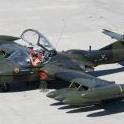This is somewhat Reserve/Guard-centric, but I thought it was worthy of general discussion. Over the last 10 years, I have watched with horror as the ANG has tried harder and harder to become like the active duty. Our leadership has yelled from the rooftops "We're just like active duty! We're an operational reserve, not strategic! Give us new equipment! Deploy us more!" Meanwhile.... The standard ANG AEF deployment has gone from 45 days to 180. ANG units are now being routinely tasked for non-voluntary, non-combat 90-120 day TSP deployments. And now it looks like the reserve component deploy to dwell ratio is in question. For many years, the RC's deploy to dwell ratio has been set at 1:5 vs. active duty's 1:2, which means that a 1-each fighter guy could expect to deploy 45 days roughly every 1 1/2 years. This was good living - and enticed many active duty brethren to come to greener pastures. Now Guard leadership is discussing reducing the Guard deploy to dwell to 1:3 (see article below). I'm wondering if the ANG is still being viewed as a good deal by those considering punching from AD. Are the incentives still there for an active duty bubba to join the Guard? Would you join the ANG knowing that a 180-day is right around the corner? Are the guys leaving AD going to the Reserves/Guard or are they getting out all together? I'm also interested in thoughts on the increasing Federalization of the ANG, which is supposed to be primarily a state organization. We are looking more and more like the active duty by the day. Is the Guard still the Guard? Will there be a time in the future when we are aligned so closely that the Guard is dissolved? Will ANG personnel (especially part-timers) endure the increase in ANG deployment length / ops tempo or will they start jumping ship for greener pastures (airlines)? Article Follows: The NGAUS president addressed the initial public hearing last week of the National Commission on the Future of the Army in Arlington, Va. Retired Maj. Gen. Gus Hargett offered five recommendations for the panel to consider. The eight-member panel was created by Congress to determine how the Army should look to meet coming threats. A major part of its charge is to determine the role of the reserve component, both the Guard and the Army Reserve. Its report is due to Congress Feb. 1, 2016. Also speaking was Maj. Gen. Edward W. Tonini, the Kentucky adjutant general and president of the Adjutants General Association of the United States. He told the panel the Army leadership feared the recommendations that would result from the commission's review of the Army. In 19 pages of written testimony presented to the commission one day earlier, Secretary of the Army John McHugh and Gen. Raymond T. Odierno, the Army chief of staff, called reserve-component cost-effectiveness a "myth." Also, retired Maj. Gen. Ray Carpenter, who served more than two years as acting director of the Army National Guard before retiring in 2011, has joined the staff of the panel as executive director. Here are summaries of the three presentations: The NGAUS president told the commission that the service can rely on an accessible Army National Guard for the foreseeable future. Hargett said, "I think we have created a culture in the Guard where they expect to be used." In his remarks and his written testimony, Hargett gave five recommendations for the panel to consider. They are: - Sustain the combat role of the Army National Guard as an integral part of our nation's first line of defense; - Sustain the personnel end strength of the Army National Guard; - Continue the operational employment of Army National Guard units in missions overseas to sustain a base of operational experience; - Assure the Army National Guard receives modern equipment in order to bolster interoperability with the active component; and - Shape the Army leadership culture to assure that senior leaders have Total Force experience. When Hargett was questioned about dwell time for citizen-soldiers and whether a ratio of one year of deployment every three years could be sustained, he said, "I think the answer is yes." Dwell time is an important issue because the commission is to take a close look at the Army's Aviation Restructure Initiative, which, among other things, would remove all AH-64 Apache helicopters from the Guard and put them in the active component. Studies that portray the Army's plan as a money-saver use a dwell time ratio for the Guard of one year mobilized in every five-year period, or 1:5. "I'm not opposed to ARI," the NGAUS boss told the commissioners. "I think ARI is a step in the right direction." However, he said, when a more realistic and attainable dwell-time ratio between deployments is used, such as 1:3, ARI saves more money by keeping Apache helicopters in the Guard. Hargett's full written testimony is available on the commission website at www.ncfa.ncr.gov. It can be found under Reading Room. Tonini told the panel that dwell times are often misleading, especially when applying a recent ratio of 1:5 to a time of a national emergency. The bottom line for him, he said, is that the Army Guard is ready whenever needed. "The Guard is accessible," the Kentucky adjutant general said. "All you have to do is ask. We've never said, 'No.'





